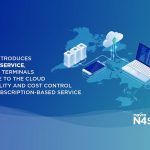Transportation management sits at the heart of a company’s supply chain operations. Having the right solution will allow you to consistently deliver on time and in full (OTIF), at the lowest possible cost. This Holy Grail feat of wowing customers during the most pressure filled and demanding moment of our time – while, of course, knocking profits out of the park and scaling your business – is surprisingly easier to do and more accessible than ever before. It’s just a matter of choosing the right technology wisely.
To help you do so, we’ve compiled some of the most frequently asked questions surrounding transportation management systems.
1. What are the key functions of a Transportation Management System (TMS)?
In essence, a TMS is leveraged to move products from point A to point B as efficiently and cost-effectively as possible. To succeed in this, an effective transportation management system will provide end-to-end visibility across the entire multi-party network (beyond just logistics providers), as well as multi-modal and container, pallet, and parcel support. Consistent OTIF delivery also requires exceptions management using real-time track and trace visibility with real-time alerts and in-app corrective actions capabilities.
Transport planning is an often-overlooked key function of a TMS solution. To take advantage of every opportunity for optimization, your TMS should automate key fulfillment concerns, such as efficient and cost-effective sourcing, routing, and carrier selection based on each individual order’s service requirements.
Financial and analytic functions are also vital to cost control and continuous improvement. A robust TMS solution will offer rate and invoice management and allow you to set and track performance KPIs.
2. Can’t I just use my ERP for my transportation needs?
Most ERPs are a general ledger, so they are essentially limited to receiving and storing information within the four walls of the company. In other words, they can collect and send information to and from network partners – such as suppliers, warehouses, and carriers
– but have no other functionality for processing, analyzing, or optimizing that data. Static systems such as these with fixed business rules are no longer enough to handle the complex demands and challenges of the modern supply chain.
The right TMS solution helps businesses process their data and make smarter, more cost-effective planning and execution decisions to improve operations. For instance, by providing real-time visibility into flows and sending alerts to track and trace orders and quickly resolve exceptions as they occur.
ERPs also don’t offer network-wide access to information. A TMS solution is critical for gaining end-to-end supply chain visibility.
3. How will a TMS reduce costs and help me grow my revenue?
Transportation costs are typically a major supply chain expense. Fortunately, your TMS solution can help control costs and even boost profits. Depending on where you are in your digital transformation, merely automating transport planning and execution processes (as those mentioned above) will improve your ability to optimize everything from sourcing decisions to carrier and route selections. Transportation management solutions that have a built-in cost-to-serve determination feature will further detect and minimize cost inefficiencies. Expedites, if not properly managed, also create serious cost leaks. An Order-Centric TMS is uniquely able to isolate rush orders, so they don’t financially impact other standard-level orders.
A flexible and highly configurable TMS solution also empowers companies to innovate and expand their service and solutions offering to customers, boosting revenue and driving competitive advantage.
4. What makes MPO’s TMS solution unique?
While most transportation management solutions handle operations from a shipment perspective (shipment-centric), MPO offers the world’s only order-centric TMS. The MPO TMS solution can consume a raw order of any type (Purchase Order, Sales Order, Return) – making integration with order capture systems easy – and is also uniquely able to decompose orders into one or many shipments, so that every routing and carrier decision is fully optimized to be as efficient and cost-effective as possible.
This unique order-centric structure allows for superior rush and expedite order management. Since there is no batching or special processing, users have the power to aggregate and optimize flows as needed, until the last possible moment. The Order-Centric structure also provides unprecedented processing speeds and reduces latency in status updates to facilitate the quickest responses and most timely event management.
The Order-Centric TMS is also uniquely mode-agnostic. It is not only multi-modal; it has no mode, leg, or geographic limit. As one of the most flexible TMS solutions on the market, the Order-Centric TMS empowers its users to configure complex order flows, as well as easily modify and add new flows to accommodate their evolving business needs.
The Order-Centric structure enables the MPO TMS to leverage a robust rate and service agreement structure for pinpoint accuracy and detailed cost allocation. The MPO TMS solution captures not only transport costs, but all logistics costs including handling, detention, warehousing. (I encourage you to read more about MPO’s cost control capabilities here)







